The office of President is the highest office within IOM3. The Presidency normally runs for a term of two calendar years. The President is a Trustee of the Institute and acts as Chair of the Advisory Council, whereas the immediate Past President chairs the Executive Board (the board of Trustees of the Institute).
To see a biography of each President, please click on the image.
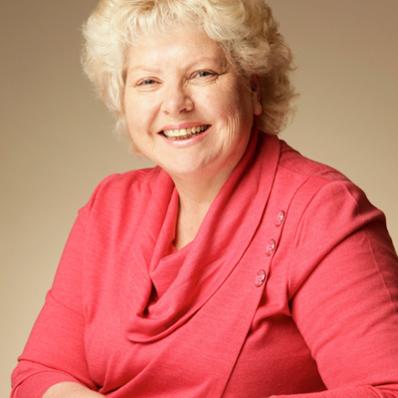
President 2025-2026
Mrs Christine Blackmore CEnv CSci FIMMM

President 2025-2026
Mrs Christine Blackmore CEnv CSci FIMMM
Christine has worked as a geo-environmentalist and Environmental Auditor for over 25 years in the international mining and metallurgical industry. Her expertise is in environmental due diligence, environmental management and environmental auditing to international best practices and client compliance. In her career, she has worked in many challenging environments from the Arctic to desert conditions, allowing her to experience and enjoy different cultures and traditions. While she is semi-retired, she continues to undertake independent consultancy work.
Christine has been a member of IOM3 for nearly 30 years and has been affiliated with the Institute in several ways. Since 2016, she has been the Chair of the Mining Technology Board (MTD). Before this, she was the first woman President of the Western Institute of Mining and Minerals (WIMM) for 5 years and Honorary Secretary for another 6 years. During her tenure, she worked to strengthen WIMM, helping it grow into a thriving local society before handing over the reins. Following this, she was the Chair of the IOM3 Mining Technology Division (MTD) for six years, leading it from strength to strength, achieving notable successes and embracing various challenges.
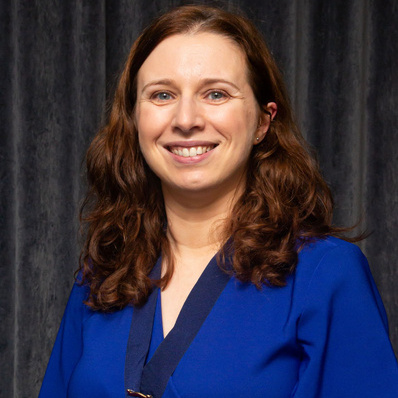
President 2023-2024
Dr Kate Thornton CEng CSci FIMMM

President 2023-2024
Dr Kate Thornton CEng CSci FIMMM
Kate is the Chief Executive of ABMEC.
Kate studied Biomedical Material Science for her undergraduate degree at the University of Manchester. She then went on to complete her PhD in self-assembled peptide hydrogels for the three-dimensional culture of Embryonic Stem Cells at the same University.
Kate first became involved with the IOM3 as a student in the Younger Members' Committee (now known as the Student & Early Career Group) in 2008 and succeeded Neil Glover as President in January 2023.
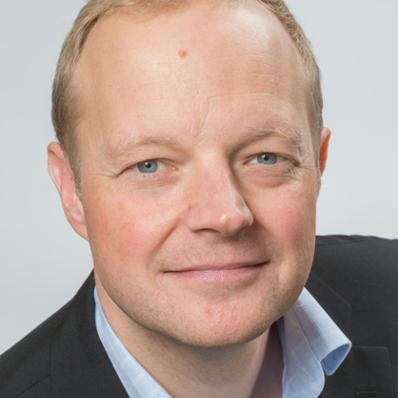
President 2021-2022
Mr Neil Glover FREng CEng FIMMM

President 2021-2022
Mr Neil Glover FREng CEng FIMMM
Neil Glover FREng CEng FIMMM is Head of Materials Research in the Central Technology and Strategy group at Rolls-Royce where he has worked for more than 25 years in materials for the aerospace and marine sectors. He studied Natural Sciences (Materials Science) at the University of Cambridge, UK. Neil has worked on the development, application and through life management of a wide range of materials from light alloys and composites to high temperature superalloys within the organisation.
He first became involved in IOM3 as a student as an opportunity to network with others and learn. He has been involved in local society committees including the East Midlands Metallurgical Society; Secretary of the High Temperature Materials Committee. Neil is a Chartered Engineer and Fellow of IOM3.
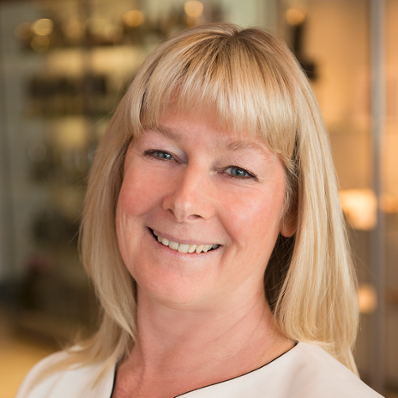
President 2019-2020
Professor Serena Best

President 2019-2020
Professor Serena Best
Serena Best CBE FREng CEng FIMMM is currently Deputy Head of the Department of Materials Science and Metallurgy at the University of Cambridge, UK. She also co-directs the Cambridge Centre for Medical Materials and is a Fellow of St John’s College, Cambridge.
Serena studied Materials Science and Engineering at the University of Surrey, UK and in 1986 moved to Queen Mary College, University of London to study a PhD on the development of a bioactive ceramic – hydroxyapatite. Best headed up bioceramics activity for the Interdisciplinary Research Centre in Biomedical Materials under the Directorship of Professor Bill Bonfield at Queen Mary College in 1991, before moving to the University of Cambridge in 2000. There she researched bone replacement materials and has more recently focused on collagen scaffolds for a range of different applications for soft tissue repair.
The following is an extract from a Q&A session held on Serena's appointment as President:
It is a real honour to take on the role of president and I am very excited for the opportunities it will provide. I am keen to see first-hand the Institute and local society activities that are ongoing around the country. During my term in office, I hope to be able to learn in more detail about the many aspects of the materials cycle that I don’t work with in my day-to-day job.
It is very important for us to understand what our members want from IOM3. The IOM3 Women in Materials Group started from a dinner conversation between a new female fellow and a member of the management team a few years ago. This conversation led, very swiftly, to the formation of the group, which has gone from strength to strength with a number of excellent meetings based on career talks, networking and mentoring, open to women, and importantly also to men. We still need more women fellows to ensure there is a more even gender balance – and for this reason, along with the membership team, I have taken to heart the Women into Fellowship initiative, which is making a very positive impact on our numbers.
However, we have other groups that need more representation too. I am keen to explore ways to improve our diversity profile across the spectrum of membership grades. However, very importantly, we need to focus on the Younger Members community. The Younger Members’ Committee is doing a truly fantastic job of encouraging participation and organising events. I feel that we have a great deal to learn from them to ensure that we offer the best links between the community and the Institute and to ensure that we are providing the service they truly want. I am keen to visit universities around the country and also talk to people starting their career – and their employers – and listen to their views and ideas.
The Institute is celebrating its 150th anniversary in 2019. I would have been interested to hear at first hand, the vision that started things off. My hope is that we continue to ensure that current issues, successes and future opportunities in the fields of materials, minerals and mining are highlighted to the government and the general public in a positive light. As an institute, we have a huge amount to offer to the benefit of the economy, the environment and the general population.
I believe strongly that the discipline of materials science and engineering is a victim of its own success. Much of the scientific research in academia, and product development in industry is reliant on materials knowledge and skills. Materials science underpins work across engineering, physics, chemistry and medicine but, unlike much of the rest of the world, the subject in the UK is becoming subsumed into other university departments. The need for qualified materials scientists is growing, but our visibility is being eroded. This is something that needs to be addressed as a matter of urgency – and reversed if possible.
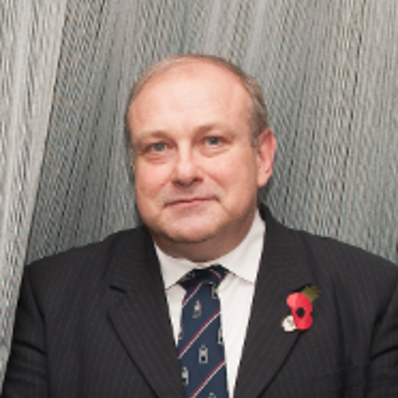
President 2017-2018
Mr Martin Cox

President 2017-2018
Mr Martin Cox
Martin Cox CEng FIMMM began his engineering career in 1979 as a National Coal Board Student Apprentice in the South Nottinghamshire Area working at Calverton and Gedling Collieries.
He is now with an Aberdeen based consultancy, continuing in the management of expertise, capabilities and technology to oil & gas wells, with a view to future energy requirements and environmental challenges related to accessing the clean energy potentially available from coal, alternative resources and CO2 sequestration in old reservoirs and the coal measures.
IOM3 Council Member & Trustee (2009), Board Member IOM3 Oil & Gas Division (2007). Member of Society of Petroleum Engineers and Institute of Energy, and Freeman of the Worshipful Company of Engineers.
The following is a brief look at what he is looking to achieve during his Presidency.
I am looking forward to getting out and about representing the Institute both in the UK and further afield. I will be trying to provide support and promote interest in existing engagement while gauging areas of potential future involvement and development, with a view to scotching the rumour that all the President does is attend dinners.
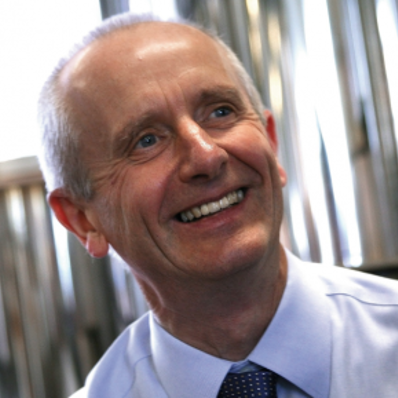
President 2015-2016
Dr Mike Hicks

President 2015-2016
Dr Mike Hicks
Mike Hicks FREng CEng FIMMM was Global Head of Materials Engineering at Rolls-Royce, looking after around 450 staff all over the world. He retired at the end of 2014, allowing him to concentrate on the role of IOM3 President from 1 January 2015.
The following is taken from a Q&A session held after his appointment as President.
How do you feel about being appointed President?
It’s a great honour to take on the role and I am excited by the opportunity to do this. I don't like to take on jobs if I can't do them properly, so now is the perfect time as I am retiring, and I still have a current network of contacts.
Do you have any primary aims?
Membership is one thing we have concentrated on in Jon Binner’s presidency and this needs to continue. We need to drive up membership numbers and there are a number of good initiatives already under way. If we provide members with what they want, that will ultimately lead to growth, so I want to listen to as many views as possible. In particular I want to encourage greater engagement and influence from younger members and increase female membership. I would also like to work towards strengthening the influence and visibility of the Institute in major Government policy and initiatives.
What will you bring from your experience at Rolls-Royce?
One of the key things is a business approach and change management. There’s a lot of change going on at the moment. The concept of continuous improvement is ingrained in us in business, and I think that culture of improvement is something I can bring. A focus on cost and delivery is also important.
How do you feel about IOM3 moving premises?
I think it’s a great opportunity. We’ve got the assurance that it’s our property, which gives us a sound financial platform to build on. It will also provide a more user-friendly and modern environment.
What can people expect from you as President?
The key thing I will be doing is listening to the views of people, both members and key stakeholders. I want to make sure that IOM3 governance is efficient and transparent. At Rolls-Royce, we have a saying that you need to put the customer at the heart of everything you do. I think you can use the same approach with the membership - put the members at the heart of everything.
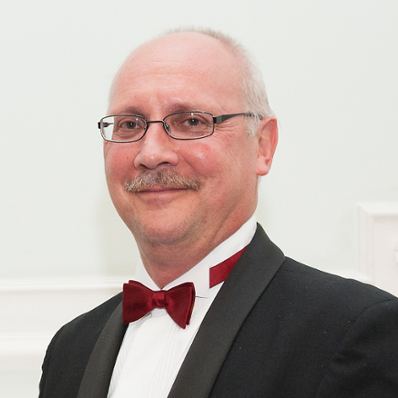
President 2013-2014
Professor Jon Binner

President 2013-2014
Professor Jon Binner
Professor Jon Binner CEng FIMMM is Professor of Ceramic Science & Engineering in the School of Metallurgy and Materials, at the University of Birmingham. He is a Fellow of the American Ceramic Society (ACerS), the European Ceramic Society (ECerS), the Institute of Materials, Minerals & Mining (IOM3) and the Association for Microwave Power in Europe for Research and Education (Ampere). IOM3 awarded him the Holliday Prize in 1995, the Ivor Jenkins Medal in 2007 and the Verulam Medal & Prize in 2011. He won an MBDA Innovation Award in 2013.
The following is an extract taken from a Q&A session held on his appointment as President.
How do you feel about taking up the role of President?
I’m extremely excited. This is a golden opportunity to really influence how the Institute operates, how it interacts with the Government and so forth. It’s a wonderful opportunity to get involved at the heart of things. I’ve been involved with the Institute all of my professional career, right back to when I was a student in the late 1970s. This is the culmination of that activity.
Has your predecessor, Jan Lewis, offered any advice or are there any of his themes you will take forward?
Jan and I haven’t had the opportunity to meet yet. We will be meeting in the next few weeks, and I am certain that Jan will be offering advice. I will certainly be asking for it. We’ve had a major reorganisation of the Institute, and that is certainly something that we want to take forward.
What aims do you have in mind for your Presidency?
In terms of restructuring, we need to modernise. As with all bodies, structures are created for a particular time and place, but that time and place changes and we need to start thinking about new structures. Jan has done an absolutely super job of that, but we need to keep looking at it. One of the things I am particularly keen to reconsider is that traditionally we’ve had a relatively small number of meetings and then they’ve gone on for a long time. I would like to see modern technology used for more frequent meetings that are much shorter in duration. Some of them don’t necessarily need everybody to be in the room at the same time. We can use video conferencing or Skype, although not for every meeting because the networking is very important. Things such as managing boards could meet more often. Then board members can stay more up to date and have faster response times. This is an approach I am very keen on.
The Institute is a very well recognised and well-respected body internationally, and I believe we need to make more contact with institutes around the world. I am a great believer in internationalisation. I know the Institute has many international members, and we need to see what more we can achieve in that area.
What will be important in your role as President to ensure promotion of the materials cycle?
I think for me personally it’s important to get around and talk to members, talk to potential members. It is vitally important that we attract new members, and that we are directly relevant to their lives. The materials cycle is absolutely crucial, and one of the key underpinning subjects in the world. Without materials, you’ve got nothing.
How do you hope to encourage and engage younger members?
Younger members are the future, without them the Institute is doomed. We need new younger members. When I was Head of the Department of Materials at Loughborough University, I ensured all students of materials were members of the Institute, which the University subsidised. Then of course, the Institute needs to work to be so relevant that once they leave, students wish to keep their membership. That’s a challenge. Also, the ways in which communications happen are changing dramatically. I teach and the way my students interact and the way they learn is different from the way I did. We need to look at how these people think and operate so we can remain relevant to them. The development of the Institute's website needs to focus on engaging the younger generation.
With the recent change in governance in mind, it is a particularly interesting time to be part of IOM3. How do you feel about the changes?
Not everyone at the Institute is entirely comfortable with the changes, but the vast majority is. I am certainly very excited by the opportunities it presents. We will be more sleek, more able to respond to initiatives and more able to respond to our members' wishes. It was vitally important that these changes happened, and I was pleased in the way things were organised. Jan deserves a huge pat on the back for the work he did. What we need to do now is gain efficiency in everything we do. We can then maximise the benefits to our members.
What role do the local societies play?
We need to find ways of revitalising the local societies. While there are some extremely good examples of local societies, there are locations where we have relatively little activity ongoing. The Institute needs to think about what we do. The history of local societies is well known, people come along to give talks and people give up time to listen. We certainly want to keep that going where we can, but there are other things we can do that will reach out to the local community and teach them about materials. We need to be imaginative about how we go about this.
What do you think are the key issues are facing materials science and engineering?
Ultimately, we need to teach the importance of these areas to young people. For me, one of the most disappointing things, as a member of academia in a materials department, is how few 16–17-year-olds really think about materials. They use them every day, they all have iPhones or other electronic devices but so few of them actually pause and think. One of the things we must do is build on reaching out to younger members and communicate the excitement of working with materials. This year I am part of launching a £4.3 million research project called Materials For Extreme Environments. All conditions for materials are gradually becoming more extreme, and that requires new materials. We need to get this message across. Materials have a great opportunity to take off, but we must get the 16–17-year-olds involved. The new A-Level in physics that includes materials will hopefully help, and we have to make sure we take advantage of that. So, the youngsters do not just accept technology, they challenge it.
What are the pressing issues facing the Institute during your term as President?
Continuing to be relevant in people's lives. Most institutions are seeing their memberships decrease, and there is a lot of pressure. With the world finances as they are, there is probably more pressure than there has been for 20 years. We must be really in touch with our members, know what they want, how they want it and how they want it delivered. Otherwise, we will end up becoming a self-serving body and that isn’t good for any institution. We have to be more receptive to what members say. We need strategies for ensuring we grow, and we have to change the way we communicate, especially with younger members.
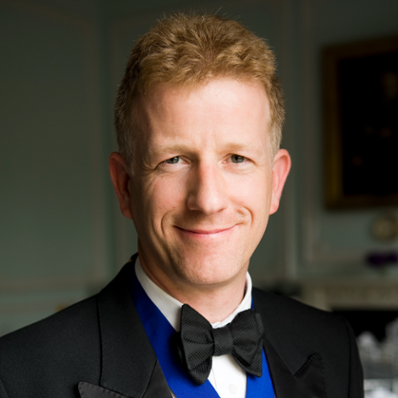
President 2011-2012
Mr Jan Lewis

President 2011-2012
Mr Jan Lewis
Jan Lewis CEng CEnv FIMMM is a Chartered Engineer, Environmentalist and Geologist. Jan holds a BEng (Hons) in engineering geology and geotechnics. He has been a member of IOM3 since 1991, with involvement at local level with MinSouth as Past President and Treasurer before becoming an Institute Fellow and Senior Vice-President of Council.
The following is an extract from a Q&A session on his appointment as President of IOM3
‘I feel extremely proud and privileged to be taking up the role of President,’ says Jan, ‘and I’m aware that I’m doing so at a time of great challenge and change. Although international mining is more active than ever as global demand for natural resources increases, UK SMEs and academia face uncertain times with cutbacks in building programmes, infrastructure projects and research funding. For many people at the moment it’s about survival and making the best of things. Yet there are still opportunities. IOM3 has an important role to play, particularly in support of the Materials Knowledge Transfer Network and the impact of materials to influence societal challenges on a global scale.
As a major science and engineering institution, the Institute has an individual membership of over 18,000 professional people.
‘Being such a broad church also gives us a significant advantage. It was a big step for the Institute of Materials and the Institution of Mining and Metallurgy to come together in 2002. But having that breadth of scope and knowledge is a major strength. I’m convinced that we can do far more, not only to promote the materials cycle and develop further in areas like product design and waste management, but to join up and strengthen our whole message so we add to our role and significance.
‘One of my themes will be managing change. We need to meet the challenges of how to increase membership, involve younger people and make professional qualifications relevant in an increasingly competitive market. It’s early days of course, and we certainly don’t know all the answers. I can see some excellent opportunities for the Institute to become ever more relevant in a rapidly changing world.
‘I succeed Barry Lye who will be a truly difficult act to follow. He has done a tremendous job over three years to develop our international links, enhance communication with membership and encourage younger member participation. I am very fortunate that he will be taking on the newly formed role of Chairman of the International Advisory Board to continue to drive our international involvement.
‘As far as environmental issues are concerned, I would like to use my presidency from a position of personal knowledge and expertise to advance sustainability and CSR. The mining industry has done a lot to become more sustainable, but there’s much more to do. It’s perfectly possible to address environmental issues at a reasonable cost, and for governments, mining companies and local communities to work together for their mutual interests. This will be an important and continuing debate – especially in emerging countries.’
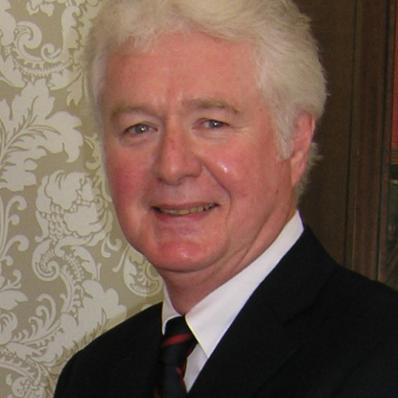
President 2008-2010
Mr Barry Lye

President 2008-2010
Mr Barry Lye
Barry Lye was educated in Ceramic Technology at Staffordshire University and immediately became a member of the then Institute of Ceramics and British Ceramic Society, which at that time was almost obligatory and certainly expected by senior personnel in the industry who were members themselves.
Barry has sat on and been involved in many technical committees and boards within the industry, including the Coalition for Safe Ceramic Ware in Washington DC, the Ceram Council, the Ceramic Industry Forum and the British Ceramic Confederation. He is currently in charge of the technical aspects of sourced tableware for Arc International, a large French glass manufacturing company which sources tableware from various manufacturers in all parts of the world.
Barry is a Fellow of the Institute, a Chartered Engineer and Chartered Scientist. He also serves as a member of the IOM3 membership committee, and has served as President of the Institute.
Driven by his commitment to IOM3 and passion for the clay industry, the following explains his priorities for the two-year term and what being President means.
I see becoming President as a continuation, or a pinnacle from a personal point of view, of my involvement with the Institute [Barry Lye sat on the 2005-7 Council as Senior Vice-President and Honorary Overseas Secretary]. It is a means of trying to put back some of what I have been given. However, it appears that the more I put in, the more I get back!
I never imagined I would be asked to take on the role of President, but it means a great deal to me, from a personal, professional and industrial point of view. It is a great honour both for me and the industry that I have been associated with for the whole of my career, which, unfortunately, has suffered over the past few years in its manufacturing capability.
My priority during my term of office is to involve younger members in the running of IOM3 and to actively encourage them to contribute as often as possible. I also want to foster an atmosphere of openness, communication, opportunity, inclusion, aspiration, education and participation. I would like to see our members take every opportunity to become involved and be counted. It is only with their help that we will continue and become stronger. We all must take responsibility for the infrastructure of our organisation.
We should also continue to consolidate our position within the materials arena to be seen as a world authority. This will require operating within and outside the UK in emerging economies.
Without doubt, the strength of IOM3 lies with our members and with the organisation’s expertise in what it does. In the past, demarcation between materials was reasonably easily defined, but today it is more difficult. We are therefore in a strong position, in that we have a great deal of knowledge, both within the Institute itself and through our membership across a broad spectrum. I will continue to work toward strengthening our premier position in the field of materials.
If the UK is to succeed and be successful when competing against other economies, excellence in science, technology, engineering, mathematics (STEM), and chemistry will be vital. Unfortunately, we appear to be dropping behind those economies, with graduate levels in STEM subjects falling and departments closing.
Competitive economies are graduating 1,000 times more engineers per year than the UK does. In my own field, the department where I was educated has closed and no teaching in ceramics is offered. This is in the home of ceramics, the potteries. I therefore feel strongly that far more emphasis on science education is vital to ensure a strong future for our country. Everyone, the Government, schools, parents and, of course, our Institute must be involved.
During my career in the ceramic industry, I have been extremely fortunate to be involved in technical, R&D and management functions. I have also travelled a great deal and seen how other countries and industries operate. My experience in these areas will hopefully allow me to contribute to the Institute’s continuing success as the leading authority on materials throughout the world.
I believe I am the first representative of the ceramic industry to take on the position of President and sincerely hope I am not the last. I am really looking forward to the next two years.’
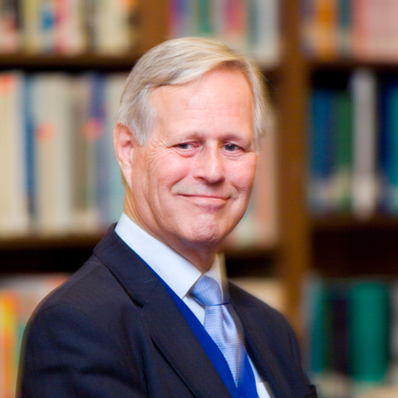
President 2006-2007
Dr Richard Dolby

President 2006-2007
Dr Richard Dolby
Richard Dolby OBE FREng CEng FIMMM is a former Director of Research & Technology at TWI UK.
The following is an outline of his plans as President:
"Being President of this Institute for the next two years is a very special honour. Over 25 institutes and societies have merged over a period of more than 100 years to help create the Institute we have today. The past achievements of these organisations and their members have been enormous, and this brings a heavy responsibility for continued success and prosperity.
My background is materials joining where I spent much of my career at TWI, a membership-based organisation offering services to both individuals and companies. In an engineering context, joining matters crucially to the safe and reliable operation of most structures and components, whether discussing the assembly of a nuclear power plant or a mobile phone. This is because welding, and other joining methods, can so easily deliver poor quality joints. It’s a dodgy business. Careful planning, extensive background knowledge, clear procedures and controls to ensure quality, and competent, qualified welders and inspectors are all necessary to deliver joints suitable for intended service.
I believe much the same factors hold for individuals joining Institutes. Institutes need to provide fast, trouble-free joining procedures. They must offer qualifications and competence assessments, as well as useful technical and business knowledge to their members. Institute staff must provide quality service, and the organisation must be financially sound and have properly planned for the future.
My judgement is that our Institute does many of these things well, but we can do better in our planning, quality of service, and knowledge capture and dissemination. These are the main improvement areas I would like Council to approve and action during the next two years.
Firstly, while we have a mission and broad aims in place, we lack a medium-term corporate plan against which to measure achievement. Good progress has been made on this by the Institute staff in the last months of 2005 and Council will be engaged in finalising the plan early this year.
Secondly, I believe our services should be externally accredited for quality delivery to ISO 9001, and this will embed the culture of continuous improvement throughout the organisation.
Thirdly, to increase our appeal to younger members, attract new members overseas and enhance communications for all, we must make better use of our website by increasing the number of e-services on offer, and adding much more knowledge on materials and minerals for both technical and business use. We need members to want to visit the site regularly for updating, and not regard qualifications and the house magazine as the only member benefits.
We have a fine Institute that is strengthening its position as the voice of materials, minerals and mining internationally. The recent mergers with the Institutes of Packaging and Clay Technology have extended our influence. I believe it is an Institute which is listening hard to its members and striving to improve services. Where you are able, I hope you will get more involved in our many central, regional, or divisional activities, and take advantage of the growing list of member benefits, as well as letting us know your ideas for service improvements."
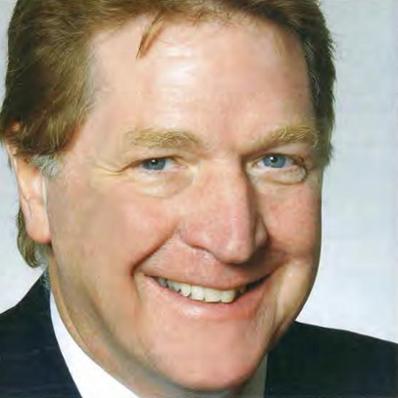
President 2004-2005
Mr Jeff Smith

President 2004-2005
Mr Jeff Smith
Jeff Smith started out doing Mechanical Engineering at Newcastle University, this was followed by a 12 month conversion course leading to an Honours degree in Mechanical and Mining Engineering. He is a Managing Partner with the mining consultancy firm Wardell Armstrong. He is the first president of the Institute from the former Institution of Mining and Metallurgy (IMM) and is aware that some may still view him as coming from `the other side'!
The following is taken from a Q&A session held on his appointment.
You're the first mining engineer to become President since the merger. How do you see your role in light of this?
I'm not going to merely look after parochial interests of the former Institution of Mining and Metallurgy. I'm very interested in the grassroots activities going on in the branches and societies. I'd also like to continue the tradition of previous presidents of having an oversight or high-level view of where the Institute's going, how it's managed, and what its role is in the institution arena, since we're now a major player. I'm also aware that there are many small institutes whose interests reflect those of some of the technical divisions, so this may have a place in the medium-term activities.
Do you think the Institute is moving in the right direction?
We have settled down remarkably well after a relatively painless merger [some working on the membership database may not agree!]. The two merging Institutes were a very good fit as the former IMM came in at the front end of the materials cycle. However we must be careful not to just focus on the big issues, and remember that the regions are important for supporting the fundamental work of the Institute.
What will be your main objectives during your presidency?
My preferred directions and core issues for the Institute (as I couldn't hope to achieve all of these in one year!) include:
- Establishing what members want from the Institute. Many members do not attend local functions and even fewer use the facilities at 1CHT. This is particularly true for overseas members, whose only contact may well be Materials World and the website. 'My Materials World' certainly promises to help in this regard.
- Providing visible support to our regional and local activities. These activities depend on active and interested members, but we must not take their interest and support for granted. This must be a priority over and above any 'public good' activities — although I recognise the importance of these. ■ Addressing present and evolving social and demographic changes. These include an ageing population, the need for waste recycling and energy efficient homes and transportation systems, understanding and communicating with the new 'cyberspace' generation, and the exporting of service and industry jobs overseas. ■ Raising the profile of our field among young people. Unless we can present technology as 'cool' to school children, tomorrow's engineers and materials scientists will not exist. We already have an excellent schools initiative, but how can we get the media interested in technology news and away from their apparent fascination for medical stories? ■ Being more inclusive. I believe that we (and all other professional institutes) should offer equal value and importance to non-professional, non-university educated members.
You were president of the IMM Western Branch twice prior to your new role as Institute president. What do you enjoy about these sorts of roles?
I think it's a sense of being part of something substantial, of having a presence in an important organisation that can influence and shape events, and colour attitudes at high government or company level. The variety appeals to me as well.
What role do you see the Institute playing in order to strengthen the future of mining engineering?
I'd like to think that we now have a greater voice in the mining industry than we had before and more clout than the individual institutes had before merger. Hopefully we can have a hand in halting what seems to be the decline of the UK coal industry, which is sadly subject to short-term economic pressures.
What advice would you give to young people in the UK considering a career in mining?
Go for it! There's going to be a desperate need for mining engineers and it's the best opportunity for travelling to virtually any country. The UK has trained some of the best mining engineers in the world. Unfortunately, the opportunities in this country are limited unfortunately but a mining degree could be traded anywhere internationally There are other opportunities for using a mining qualification, such as working for an investment bank in the city.
How could the Institute encourage more students into the profession?
I think we're going in the right direction by going into schools to encourage children. I'd like to understand why engineering is not as popular as it was, as I was one of a swarm of people who went to university to study engineering.
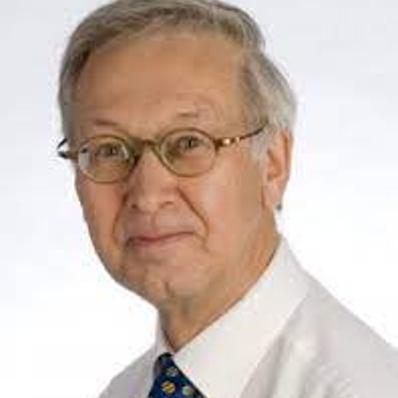
President 2002-2003
Sir Colin Humphreys

President 2002-2003
Sir Colin Humphreys
Professor Sir Colin Humphreys CBE FRS FREng CEng FIMMM was the first President of IOM3 following the merger. He is Professor of Materials Science at Queen Mary University of London, former Goldsmiths' Professor of Materials Science at the University of Cambridge and Professor of Experimental Physics at the Royal Institution in London. He gave his IOM3 Presidential Address as a public lecture at Materials Congress on 10 April 2002.
The following is a brief part of that address.
"I am honoured to be the first President of this newly formed Institute and look forward to seeing where the next two years take us.
The Institute has to retain the 'high ground' and be at the very heart of materials science. We must make sure we maintain vitally strong interest in the traditional areas but also expand our interest in new materials fields.To encourage students we have to go into schools. One thing that is being looked within the Institute is a new AS level in materials - and then maybe following that up with a new A level in materials."

